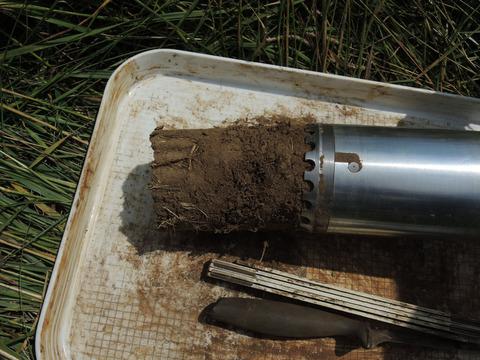当前位置:
X-MOL 学术
›
Funct. Ecol.
›
论文详情
Our official English website, www.x-mol.net, welcomes your
feedback! (Note: you will need to create a separate account there.)
Are belowground clonal traits good predictors of ecosystem functioning in temperate grasslands?
Functional Ecology ( IF 4.6 ) Pub Date : 2021-01-18 , DOI: 10.1111/1365-2435.13755 Jitka Klimešová 1, 2 , Ondřej Mudrák 1 , Jana Martínková 1 , Aleš Lisner 3 , Jan Lepš 3, 4 , Arinawa Liz Filartiga 1 , Gianluigi Ottaviani 1
中文翻译:

地下克隆性状是否是温带草原生态系统功能的良好预测指标?
更新日期:2021-03-08
Functional Ecology ( IF 4.6 ) Pub Date : 2021-01-18 , DOI: 10.1111/1365-2435.13755 Jitka Klimešová 1, 2 , Ondřej Mudrák 1 , Jana Martínková 1 , Aleš Lisner 3 , Jan Lepš 3, 4 , Arinawa Liz Filartiga 1 , Gianluigi Ottaviani 1
Affiliation

|
- In herbaceous communities which host many perennial species, belowground clonal organs and traits remain largely overlooked in ecosystem functioning studies. However, the belowground compartment is expected to play a key role as the greatest proportion of biomass is allocated belowground. Our main goal was to test whether including underexplored clonal traits (in tandem with widely used aboveground traits) improves the ability to predict biomass production and soil carbon in temperate grasslands. We examined the relationships between five plant functional traits (canopy height, specific leaf area [SLA], lateral spread, multiplication rate, persistence of rhizome) and biomass allocation (aboveground, roots, rhizomes) and soil organic carbon (SOC).
- We studied 52 grassland plots clustered in two Central European regions differing by management intensity. We assessed biomass allocated aboveground and belowground (into roots and rhizomes separately). SOC was measured from averaging five soil cores at each plot. Trait community means were calculated for each trait from species compositions using databases.
- The most important traits in predicting biomass allocation were canopy height and persistence of rhizome. Results, however, differed for the two regions implying context dependency of the relationships. Persistence of rhizome and canopy height emerged as traits largely affecting ecosystem functioning at the less intensively managed grasslands—likely because of their links to biomass production and plant economics spectrum. At the more intensively managed grasslands, canopy height and SLA were negatively correlated with root biomass, with persistence of rhizome playing a (lesser) role. We found no significant predictors for SOC.
- Synthesis. This study is the first attempt to integrate belowground clonal and aboveground traits to predict biomass allocation and soil carbon. Findings indicate that the ability of plant functional traits in predicting ecosystem functioning is highly context dependent, varying greatly even within the same community type. Only SLA and, to a lesser extent, persistence of rhizome consistently predicted root biomass in the two regions. We call for a broader implementation of the whole‐plant multifunctional approach applied here, ideally extending to other open ecosystems.
中文翻译:

地下克隆性状是否是温带草原生态系统功能的良好预测指标?
- 在拥有许多多年生物种的草本群落中,地下克隆器官和性状在生态系统功能研究中仍然被很大程度上忽略。但是,由于大部分生物质被分配到地下,因此地下室有望发挥关键作用。我们的主要目标是测试是否包含未充分利用的克隆性状(与广泛使用的地上性状同时发生)可提高预测温带草原生物量生产和土壤碳的能力。我们研究了五个植物功能性状(冠层高度,比叶面积[SLA],侧向传播,繁殖率,根茎的持久性)与生物量分配(地上,根,根茎)和土壤有机碳(SOC)之间的关系。
- 我们研究了集中在两个中欧地区的52个草地地块,这些草地地块的管理强度不同。我们评估了地上和地下分配的生物量(分别分为根和根茎)。通过在每个图上平均五个土壤核心来测量SOC。使用数据库从物种组成中计算出每个性状的特质群落平均值。
- 预测生物量分配的最重要特征是树冠高度和根茎的持久性。但是,这两个区域的结果不同,表明关系的上下文相关性。根茎和冠层高度的持久性是在不那么密集管理的草原上显着影响生态系统功能的性状出现的,这可能是由于它们与生物量生产和植物经济谱有关。在集约化程度更高的草地上,冠层高度和SLA与根生物量呈负相关,而根茎的持久性起着(较小的)作用。我们没有发现SOC的重要预测指标。
- 综合。这项研究是整合地下克隆和地下特征来预测生物量分配和土壤碳的首次尝试。研究结果表明,植物功能性状预测生态系统功能的能力高度依赖于环境,即使在同一群落类型内,其变化也很大。只有SLA和根茎的持久性在两个区域一致地预测了根的生物量。我们呼吁更广泛地实施此处应用的全厂多功能方法,理想情况下应扩展到其他开放式生态系统。











































 京公网安备 11010802027423号
京公网安备 11010802027423号